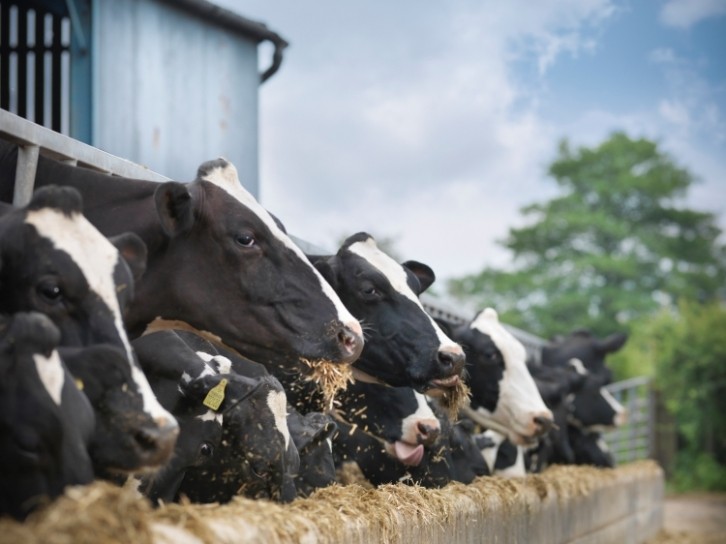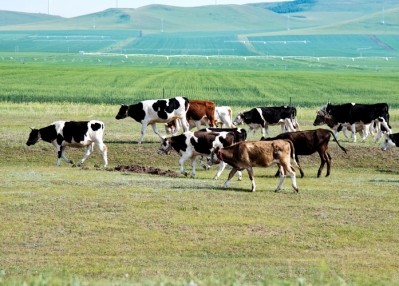Vaccine against rare blood disease in cattle is invented

Developed by University of Missouri researchers, the vaccine holds promise to be the first product to effectively protect against the rare but potentially deadly blood disease in cattle.
Led by Roman Ganta, a McKee-endowed professor in Mizzou’s College of Veterinary Medicine and a Bond Life Sciences Center researcher, the work involved the genetic modification of Anaplasma marginale, the pathogen that causes bovine anaplasmosis.
The modified pathogen was then injected into cattle to provide immunity against the disease – though more testing is needed to determine the length of protection and the vaccine’s wider application scope.
More than a decade in the making
Vaccines against so-called vector-borne diseases – those caused by parasites, such as ticks – are often challenging to develop. “This is because the pathogens are well-adapted to escape the immunity,” Ganta told DairyReporter. “It is also not easy to grow the organisms as they are obligate intracellular bacteria [i.e. require a host cell in which to survive and replicate].”
Another reason is that few scholars had pursued this line of research, with none of the previous vaccines proven to be effective in controlling the disease.
In addition, ‘various scientific methods commonly useful for most bacteria cannot be useful for pathogens such as Anaplasma marginale,’ Ganta said. “And molecular tools, such as genetic methods to manipulate the bacterial genes, were not available until recently.”
“We spent over 10 years of painstaking research to develop these methods, which are now aiding the development of such modified live vaccines. To date, we are the one and only scientific group who could do this kind of research."
What is bovine anaplasmosis – and how is it currently treated?
Bovine anaplasmosis is estimated to cause nearly $1bn in losses globally, primarily due to reduced production, treatment costs and deaths. In dairy cows, clinical signs of anaplasmosis include decreased appetite and milk production, increased body temperature, abortion and death1.
The disease is transmitted through tick bites and causes severe and often fatal blood loss. “The pathogen infects the red blood cells and causes the rapid loss of blood - by more than 50% at times - making the animals severely anemic and leading to muscle weakness, weight loss and many other complications leading to deaths, particularly in older animals,” Ganta explained.
Producers currently treat the disease with chlortetracycline, an antibiotic that is effective but doesn’t fully eliminate the infection.
“We don’t have scientific data for the reasons why chlortetracycline doesn’t work,” Ganta told us. “One possibility is that the antibiotic resistance may be occurring due to its continuous use as a food supplement [In the US, chlortetracycline is fed to cattle to control anaplasmosis.].
“Another possibility is that the bacterium may hide in certain organs where the antibiotic may not be able to completely ‘reach’ and kill the pathogen.”
Efficacy and further research
So far, the new vaccine has been proven to protect cattle for at least a month, but there are indications that this protection would last longer, we were told.
“We only tested the application of the vaccine by challenging [its efficacy] after one month,” Ganta said. “That doesn’t mean it will only be effective for a month.
“We carried out similar vaccine research for another tick-borne pathogen - a closely related bacterium to Anaplasma marginale - and reported that the vaccine offers protection when tested one year after vaccination.
“So, it is highly likely that this vaccine will be very effective as well in providing long-lasting protection.”
The researcher said his team is working with ‘a major animal industry partner’ to test the vaccine’s length of protection and potential applications, with the industry partner set to run its own testing before seeking approval from the USDA.
Asked if there were any side-effects of administering the experimental product – particularly with respect to dairy cows – Ganta said none had been recorded. “The obvious benefit is to make the animals free from the disease, which should improve the milk and meat production,” he concluded.
Sources:
Genetically modified live vaccine offers protective immunity against wild-type Anaplasma marginale tick-transmission challenge
Authors: Ganta, R. Roman, et al.
Published: Vaccines, 2024, 126069, ISSN 0264-410X
DOI: 10.1016/j.vaccine.2024.06.036
Long-Term Protective Immunity against Ehrlichia chaffeensis Infection Induced by a Genetically Modified Live Vaccine
Authors: Madesh, Swetha, Jodi McGill, Deborah C. Jaworski, Jonathan Ferm, Huitao Liu, Shawna Fitzwater, Paidashe Hove, Dominica Ferm, Arathy Nair, Cheyenne A. Knox, and et al. 2024.
Published: Vaccines 12, no. 8: 903.
DOI: 10.3390/vaccines12080903














